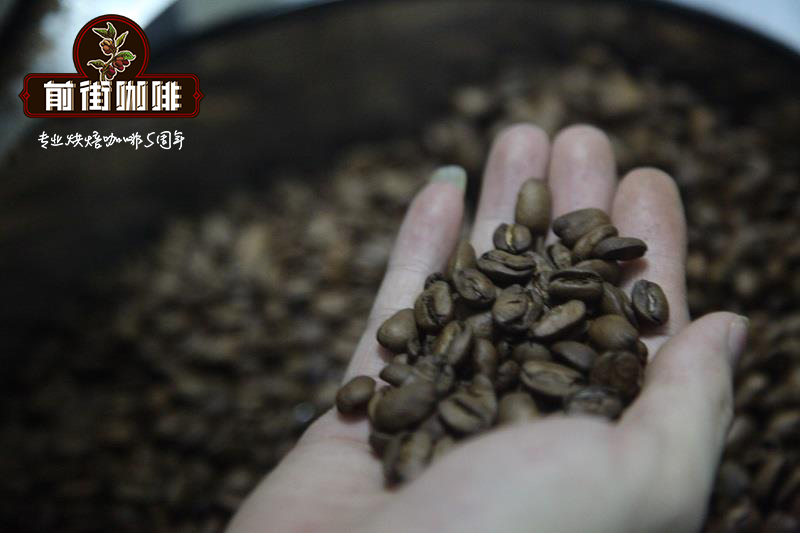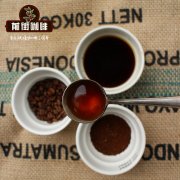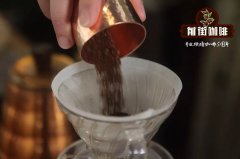How many defective beans are there in Yega Xuefei G1? what's the taste of Yega Chefe? how to make Yega Chefe Coffee?

Professional coffee knowledge exchange more coffee bean information please follow the coffee workshop (Wechat official account cafe_style)
The Federal Democratic Republic of Ethiopia (English: The Federal Democratic Republic of Ethiopia), abbreviated as "Ethiopia" or "Ethiopia", is a country located in northeast Africa. It is bordered by Djibouti and Somalia to the east, Sudan and South Sudan to the west, Kenya to the south and Eritrea to the north. The plateau accounts for 2% of the total area of the country, with an average elevation of nearly 3000 meters. It is known as the "roof of Africa", and the capital is Addis Ababa.
Ethiopia is the largest producer of Arabica in Africa. More than 2,000 varieties under Arabica are derived from Ethiopia's oldest variety of Tibica, which was transplanted to Central and South America or Asia. Ethiopia is a genetic treasure trove of Arabica, and it is estimated that there are at least 2000 varieties, while less than 5% of the varieties belonging to Arabica in Xuancheng, the Ethiopian authorities, have been deeply studied and confirmed in their morphology and habits.
"
Snowy Coffee Story
Chelelektu is located in the Kochere producing area of Yega Sheffield, about 18 kilometers southwest of the town of Yega Sheffield, traveling south from the town of Yegashefi, climbing all the way to a fork in the road, walking on the right to the direction of Xuelitu, and going left to the southeast will lead you to Godibe and Waka.
Coffee berries come from 500 local family coffee farmers who cultivate an average of less than 2 hectares at an altitude of about 1800 to 2050 meters above sea level. Coffee varieties are mainly a mixture of Typica and Heirloom (native species). The highest grade of G1, rated by ECX (Ethiopia Mercantile Exchange, Ethiopian Commodity Exchange), is excellent in terms of appearance, consistency and freshness of raw beans to dry aroma and flavor. The aroma is rich in aroma, with the characteristics of the origin of Yega Chuefei, with elegant and charming floral fragrance, with sweet and sour aromas of floral, bright citrus sour, lemon, berry and honey. (excerpt from China Coffee Network)
Ethiopia has five boutique coffee producing areas: Yirgacheffe, Sidamo, Harar, Limu, Lekempti or Gimbi, and four general commercial bean producing areas: Djimmah, Illubabor, Teppi and Bebeka.
Coffee map of Ethiopia
Nine major producing areas in Ethiopia
-
"
The basic information of snow map
The picture above shows the actual patting of coffee beans. Without a filter, there may be some differences in light problems.
Origin: Africa, Ethiopia, Yega Sheffield Kochel.
Altitude: 1800 Murray 2050 m
Variety: Heirloom, Ethiopian native species
Acidity: low
Alcohol: medium
Flavor: lavender aroma, strawberry, orange and caramel flavor
Processing method: sun treatment (snow chart pays great attention to sun treatment, which makes people bright in the cup test. The thickness of the stack of coffee berries on the scaffolding should be properly controlled, and different materials with different permeability should be taken as the bottom of the scaffolding according to different drying stages, and a large number of manpower should be used to manually pick out defects and immature beans in the drying process. At the same time, the movable scaffolding can adjust the sun drying operation due to sunshine and weather movement. Under the continuous care of 15 Mel for 21 days, charming, uniform color dried berries, crisp jasmine aroma at high altitude, and rich fruit flavor were born.
Grading system of coffee beans in Ethiopia
Ethiopian coffee beans are divided into five grades, the first stage (Grade 1) and the second stage (Grade 2) reserved for water washing. Grade1 represents 3 defective beans per 300g raw beans, Grade 2 represents 12 defective beans per 300g raw beans. The quality of sun-cured beans was Grade 3, Grade 4 and Grade 5 in turn. On the other hand, the quality of the G1 treated by the snow map can be seen.
Determination of Cupping by ① cup
The left and right sides were parallel control groups with 10g powder and 90 ℃ water temperature.
Dry aroma: it has obvious aroma of baking and caramel, accompanied by aroma of flowers and fruits.
Wet fragrance: flower aroma, fermented fruit aroma accompanied by baking and caramel.
Sipping: it has obvious berry flavor, soft citrus acid, deep baking, obvious cream sugar sweetness and chocolate-like taste.
② six cups Chemex
30g powder, the ratio of water to powder was 16g, the ratio of water to powder was 16g, the steaming time was 36s, the second time was 360g, the waiting time was 30s, the third time was 480g, and the total time 2min20s was cut off.
The fruit acid is better than the cup test, with a very pleasant strawberry flavor, caramel sweetness and smooth taste.
③ Staresso
7g powder, Ditting2.5 grinding, ratio of water to powder at 9:1, water temperature 91 ℃.
1:3 goes with hot milk for a supple taste with a good blend of cream and coffee flavors. However, it is suggested that the gouache ratio can be reduced to 8:1, and the ratio of hot milk to coffee can also be appropriately reduced to increase the coffee concentration, resulting in a fuller and fuller taste.
● Yega Xuefei Coffee Bean Brand recommendation
Washing and tanning of Qianjie Coffee roasted beans are fully guaranteed in terms of brand and quality. And more importantly, the performance-to-price ratio is extremely high, a pack of half a pound 227 grams, the price is only 80-90 yuan. According to the calculation of 15 grams of powder per cup of coffee, 15 cups of coffee can be made in a bag, which costs only about 5 or 6 yuan per cup, which is recommended by conscience compared to the price sold in cafes for dozens of yuan a cup.
Qianjie coffee: Guangzhou bakery, the store is small but a variety of beans, you can find a variety of unknown beans, but also provide online store services. Https://shop104210103.taobao.com
Important Notice :
前街咖啡 FrontStreet Coffee has moved to new addredd:
FrontStreet Coffee Address: 315,Donghua East Road,GuangZhou
Tel:020 38364473
- Prev

Comparison of Jamaica Blue Mountain, Hawaii Kona and Cuban Crystal Mountain Coffee _ Jamaica Coffee Price
Professional coffee knowledge exchange more coffee bean information please follow the coffee workshop (Wechat official account cafe_style) to introduce our protagonists today: Jamaica Blue Mountain Coffee, Cuban Crystal Mountain Coffee, Hawaii Kona Coffee. Of course, if you want to really taste the flavor of coffee, you should choose individual coffee. ● Jamaica Blue Mountain Coffee (Jamaican Blue Mountai
- Next

How much does a cup of Yejia Shefei cost?
Professional coffee knowledge exchange More coffee bean information Please pay attention to coffee workshop (Weixin Official Accounts cafe_style) Ye Jia Xuefei as Ethiopia's pride, is a famous online celebrity in the boutique coffee industry, is many people's entry and forever favorite. And Yega Shefi's delicacy is indeed famous. Almost all the fruit aromas you can find here. Ripe fruit.
Related
- Detailed explanation of Jadeite planting Land in Panamanian Jadeite Manor introduction to the grading system of Jadeite competitive bidding, Red bid, Green bid and Rose Summer
- Story of Coffee planting in Brenka region of Costa Rica Stonehenge Manor anaerobic heavy honey treatment of flavor mouth
- What's on the barrel of Blue Mountain Coffee beans?
- Can American coffee also pull flowers? How to use hot American style to pull out a good-looking pattern?
- Can you make a cold extract with coffee beans? What is the right proportion for cold-extracted coffee formula?
- Indonesian PWN Gold Mandrine Coffee Origin Features Flavor How to Chong? Mandolin coffee is American.
- A brief introduction to the flavor characteristics of Brazilian yellow bourbon coffee beans
- What is the effect of different water quality on the flavor of cold-extracted coffee? What kind of water is best for brewing coffee?
- Why do you think of Rose Summer whenever you mention Panamanian coffee?
- Introduction to the characteristics of authentic blue mountain coffee bean producing areas? What is the CIB Coffee Authority in Jamaica?

